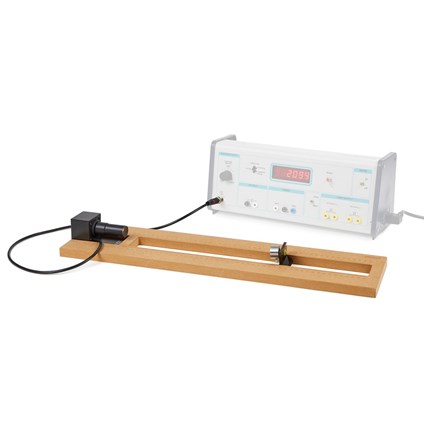What does a beta stopper do?

Our Technical team are often asked ‘What does a beta stopper do’? This small yet ingenious item can save schools a significant amount of money and improve the outcome of Atomic Physics practicals, such as investigating the inverse square law using gamma radiation from a radioactive source.
So let’s learn a little more about this nifty addition to your Physics lab.
What does a beta stopper do?
The beta stopper fits over a standard 14mm Radium-226 source, which emits alpha, beta and gamma radiation. It is made of aluminum, which is thick enough to absorb all the alpha and beta particles and allows gamma radiation to pass through, thus transforming your mixed radiation source into a gamma only source.
Why use a beta stopper?
A beta stopper can be used where a school Cobalt-60 source is reaching the end of its radiological lifespan. It is typically used in experiments which require a gamma source, such as the inverse square law experiment.
Using the beta stopper to prolong radiological lifespan
Some school Cobalt-60 sources are up to 40 years old and may be radiologically ‘dead’ due to the short half-life. Schools with a Cobalt-60 source over 20 years old may also struggle to produce meaningful results.
With the average cost of a brand new Cobalt-60 source running hundreds of pounds, schools are looking for ingenious ways to safely prolong the life of their gamma emitters.
CLEAPSS’ Physicists suggested the idea of the beta stopper to Philip Harris. The resulting beta stopper offers a solution to block all alpha and beta emissions from a Radium-226 source. Costing only a couple of pounds, the beta stopper represents a significant cost saving compared to buying a brand new Cobalt-60 radioactive source.
Beta stoppers in the inverse square law experiment
When studying Atomic Physics and Radiation at GCSE or A Level, one of the learning outcomes is an understanding of the inverse square law using a radioactive source such as Radium-226 or Cobalt-60.
By eliminating the alpha and beta particles from a Radium-226 source, the beta stopper gives good results for pupils to measure the count rate and how it falls with the square of the distance to the source using a Geiger-Muller tube.

Remember to check CLEAPSS’ up to date guidance on investigating the inverse square law relationship using gamma radiation, before undertaking this practical.
Get advice about the Philip Harris beta stopper
If you have any questions regarding about using a beta stopper, please contact our Technical Support Team via techsupport@philipharris.co.uk








